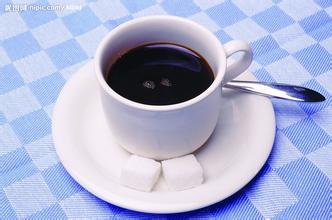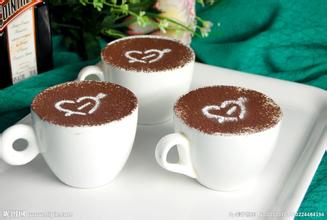Flavor and taste of Jamaican Blue Mountain Coffee introduction to boutique coffee beans in manor area
Located in the northwest of the Caribbean Sea, Jamaica is an island country at 17.42 degrees north latitude and 18.31 degrees north longitude and 76.11 degrees to 78.22 degrees west longitude. [1] the island of Jamaica is 234km long from east to west and 82km wide from north to south, with a territorial area of 11420 square kilometers, of which the land area is 10991 square kilometers. To the east across the Strait of Jamaica, facing Haiti, about 140 kilometers north of Cuba. It is the third largest island in the Caribbean, with a coastline of 1220 kilometers. Jamaica ranks third in the West Indies, second only to Cuba and Haiti. [2]
Topography
The coastal areas are alluvial plains. Such as: Guaneya plain; mountains in the east, hills and limestone plateaus in the middle and west. Karst landforms are well developed, lack of surface runoff and many caves. [2]
Climate
Tropical rainforest climate. The rainy season is from May to June and from September to November every year, with the most showers in January and May. The dry season is from December to March next year, and the weather turns cooler. The half-year period from June to the end of November is often hit by hurricanes and tropical storms. The north-central region is rich in rainfall, the climate is generally between 22 and 32 degrees, and the annual average temperature is 27 degrees. [6]
Resources
Jamaica's resources are mainly bauxite, with reserves of about 2.5 billion tons, ranking fourth in the world, with an exploitable capacity of 1.5 billion tons and an annual output of 15 million tons of bauxite, second only to Australia. [2] other rich resources include copper, iron, lead, zinc and gypsum. The forest area is 265000 hectares.
Zoning
The country is divided into three counties: Cornwall, Middlesex and Surrey. The three counties are further divided into 14 districts, of which Kingston and St. Andrews form a joint district, so there are actually only 13 district governments. The names of the districts are as follows: United District of Kingston and St. Andrew, St. Thomas, Portland, St. Mary, Santa Ana, Trelawney, St. James, Hanover, Westmorland, St. Elizabeth, Manchester, Clarendon, St. Catherine Blue Mountain Coffee is the best coffee in the world. The Blue Mountains are located in the eastern part of the island of Jamaica, hence its name because it is surrounded by the Caribbean Sea. On clear days, the sun shines directly on the blue sea, and the peaks reflect the bright blue light of the sea. The highest peak of the Blue Mountains, which is 2256 meters above sea level, is the highest peak in the Caribbean and a famous tourist attraction. Located in the coffee belt, with fertile volcanic soil, fresh air, no pollution, humid climate, foggy and rainy all the year round (the average precipitation is 1980 mm, the temperature is around 27 degrees), this climate has created the world-famous Jamaican Blue Mountain Coffee. It also creates the highest price coffee in the world. This kind of coffee has the characteristics of all good coffee, not only full-bodied and mellow, but also because of the perfect combination of sweet, sour and bitter coffee, it has no bitter taste at all, only a moderate and perfect sour taste. It is generally drunk on a single product, but because the output is very small and the price is extremely expensive, it is generally made with coffee with a similar taste on the market.
The Jamaican ambassador confirmed that he had never exported coffee bean editors to China.
While we are angry, we are also asking such a question: is there an authoritative department that can tell us whether China has ever imported Jamaican Blue Mountain coffee? To this end, our reporter specially interviewed the Jamaican Ambassador to China today. Understand the planting environment, yield and export of pure blue mountain coffee. Let's listen to his introduction.
Courtney Ratley, Jamaican ambassador to China, said: (to the effect) introduce the growing environment of Blue Mountain Coffee and the annual output.
In previous interviews, many coffee shops and coffee wholesalers, including Shangdao Coffee, said that their Blue Mountain coffee beans were imported from abroad and roasted by themselves.
Coffee wholesaler: we bake this by ourselves in China.
Shangdao coffee staff: domestic self-baking
But Ambassador Rattray told us that so far, Jamaica has not exported raw beans directly to China. The so-called import of raw beans from abroad, domestic baking is obviously a lie.
Ambassador Rattray also said that even imported roasted cooked beans must have the Blue Mountain Coffee logo of the Jamaica Coffee Industry Authority printed on the outer package. And the reporter from the Shangdao coffee and wholesale market to buy the blue mountain coffee beans on the outer packaging, there is no such sign.
Courtney Ratley, Jamaican Ambassador to China: the logo of Blue Mountain Coffee and two necessary proofs

Important Notice :
前街咖啡 FrontStreet Coffee has moved to new addredd:
FrontStreet Coffee Address: 315,Donghua East Road,GuangZhou
Tel:020 38364473
- Prev

Bright taste of Panama Kasha Coffee Manor flavor taste characteristics of boutique coffee beans
Panama is located on the Panamanian isthmus in Central America, bounded by Colombia to the east, the Pacific Ocean to the south, Costa Rica to the west and the Caribbean Sea to the north. The territory is S-shaped to connect North and South America, and the Panama Canal connects the Atlantic and Pacific oceans from north to south. It is known as the bridge of the world. [5] Panama has a land area of 75517 square kilometers, a land length of 772km and a width of 60 to 1.
- Next

Flavor and taste characteristics of moderately acidic Ethiopian coffee manor introduction to fine coffee beans
Ethiopia is located at 6 ~ 9 degrees north latitude and 34 ~ 40 degrees east longitude. It is located in the center of the Horn of Africa and is a landlocked country. It is bordered by Djibouti and Somalia to the east, Sudan to the northwest, Eritrea to the north and Kenya to the south. [5] there are mainly mountain plateaus in Ethiopia, and most of them belong to the Ethiopian plateau. The central and western regions are the main body of the plateau, accounting for the whole territory.
Related
- Detailed explanation of Jadeite planting Land in Panamanian Jadeite Manor introduction to the grading system of Jadeite competitive bidding, Red bid, Green bid and Rose Summer
- Story of Coffee planting in Brenka region of Costa Rica Stonehenge Manor anaerobic heavy honey treatment of flavor mouth
- What's on the barrel of Blue Mountain Coffee beans?
- Can American coffee also pull flowers? How to use hot American style to pull out a good-looking pattern?
- Can you make a cold extract with coffee beans? What is the right proportion for cold-extracted coffee formula?
- Indonesian PWN Gold Mandrine Coffee Origin Features Flavor How to Chong? Mandolin coffee is American.
- A brief introduction to the flavor characteristics of Brazilian yellow bourbon coffee beans
- What is the effect of different water quality on the flavor of cold-extracted coffee? What kind of water is best for brewing coffee?
- Why do you think of Rose Summer whenever you mention Panamanian coffee?
- Introduction to the characteristics of authentic blue mountain coffee bean producing areas? What is the CIB Coffee Authority in Jamaica?

